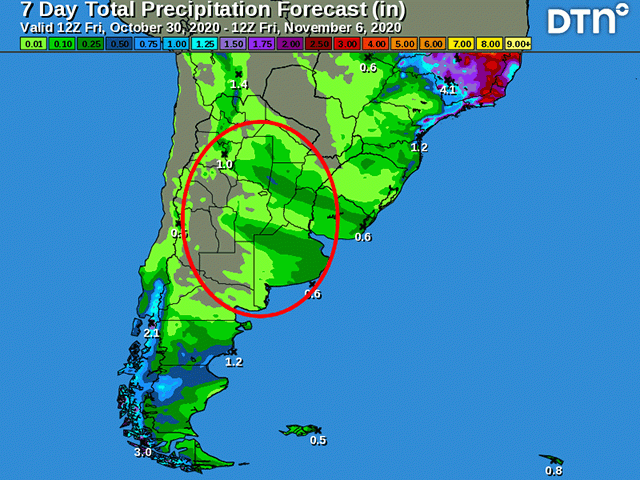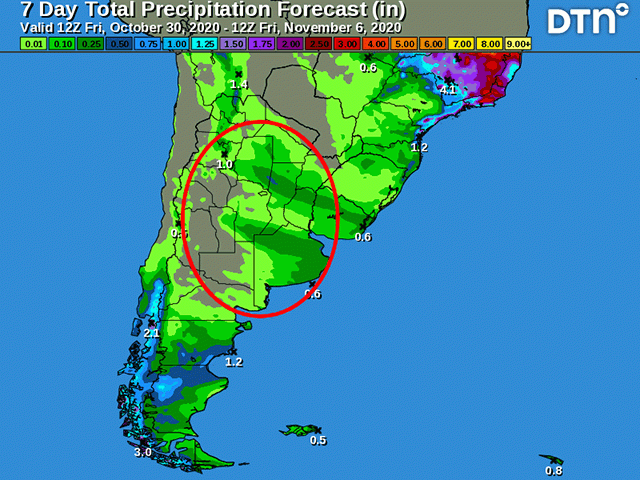South America Calling
Argentina La Nina Dryness Noticed
Lower crop yield forecasts in Argentina due to La Nina influence are already getting posted. The USDA ag attache for Argentina reported at the end of October these details:
"Post projects wheat production for marketing year (MY) 2020-21 at 17.4 million (metric) tons, 1.6 mmt lower than USDA's official number, due to dry La Nina weather conditions which could cause losses for a couple more months. Local contacts currently project production at between 16.5-18
mmt ...
Post forecasts (corn) production in MY 2020-21 at 48 mmt, 2 mmt lower than USDA on a reduction in area and yield. Most contacts and analyst forecast a production range between 47-49 mmt. Although corn returns are currently higher than soybeans in the Pampa Humeda, the country's prime production region, dry conditions and the lack of soil humidity are delaying the planting of early corn. In some cases, the dry conditions are forcing farmers, especially in Cordoba, Santa Fe and Entre Rios provinces, to postpone planting to early December and to produce late corn. Under these conditions, farmers may switch from corn to soy due to its lower investment costs to reduce risk.
P[L1] D[0x0] M[300x250] OOP[F] ADUNIT[] T[]
Planting in Buenos Aires and La Pampa provinces, under better soil moisture, maintains a normal pace. To date, roughly 25-30% of the country's total corn has been planted. Due to ongoing plant stress, plus the probability of lower early corn planted area and yield than expected, Post lowers its yield estimate below that of the past two crop seasons and USDA's official yield. Industry sources estimated production of 50 mmt in MY 2019-20."
DTN Lead Analyst Todd Hultman noted this week that just because the ag attache lists details, that doesn't automatically mean that the World Agricultural Supply and Demand Estimates (WASDE) report will include those lower production numbers. But it is a sign that the bean and kernel counters are taking notice of what's going on and how future estimates are likely to keep factoring in La Nina's impact.
There have been many references, including on DTN, about the strong relationship between La Nina and below-average rain during the growing season in Argentina. And, going into early November, there's not much rain in the forecast.
Rainfall forecasts offer no more than about one-half inch, mostly in the state of Buenos Aires. Seasonal forecasts continue that drier trend; prospects of below-average rain in the December-to-February time frame exceed 70% in the central Argentina state of Santa Fe, a prime corn and soybean producer.
Argentina temperatures so far are in the near- to below-normal category. But any move to above-average temperatures would offer the potential of heat stress very quickly due to drier soils.
Bryce Anderson can be reached at bryce.anderson@dtn.com
Follow him on Twitter @BAndersonDTN
(c) Copyright 2020 DTN, LLC. All rights reserved.






Comments
To comment, please Log In or Join our Community .